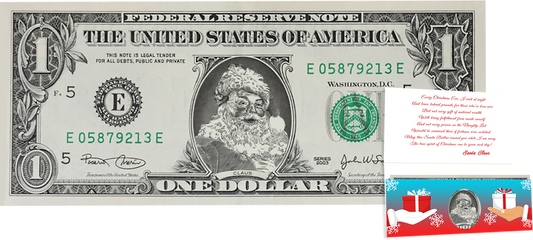Lunar New Year Red Envelopes: Traditions and Etiquette Explained
Lunar New Year, also known as Spring Festival, is a time of vibrant celebrations marking the beginning of the new year on the lunisolar calendar. One of the most recognizable traditions associated with this holiday is the giving and receiving of red envelopes, known as hongbao in Mandarin. These red packets are not merely ornamental but hold monetary gifts that are bestowed upon family and friends as a gesture of good luck and prosperity for the forthcoming year.
The color red in Chinese culture symbolizes happiness, vitality, and good fortune, which is why the envelopes are traditionally red. They are often adorned with beautiful designs, auspicious symbols, and sometimes include well-wishing phrases. The act of giving red envelopes extends beyond the physical gift; it represents the transfer of blessings from the elders to the younger generation and reinforces social bonds within families and communities. The oldest stories of Chinese New Year date back as far as 221 BC.
The distribution of red envelopes filled with money is governed by a set of cultural etiquette and norms. Elders typically present these envelopes to children and unmarried adults. In the professional context, it is also common practice for employers to give red envelopes to their employees. The amount of money inside the envelope may vary, but it is usually given in even numbers and avoids the number four, which sounds like the word for "death" in Mandarin, thus considered inauspicious.
Official Chinese New Year Lucky Dollar
Importance of Lucky Money During Lunar New Year
Lunar New Year, also known as Spring Festival, is a paramount holiday throughout several East and Southeast Asian cultures. It marks the beginning of the lunar calendar year and is rich in traditions that have been passed down through generations of parents and grandparents. Celebrations often last up to two weeks, with the first day being the most significant.
Families gather from near and far, emphasizing the reunion and strengthening of familial bonds. They clean their homes in preparation, symbolizing the sweeping away of bad fortune and making room for good luck. New Year's Eve and New Year's Day are typically reserved for family, with a special dinner that often includes foods symbolic of wealth and prosperity, like fish and dumplings.
Traditional red envelopes, or "hóngbāo", represent blessings and good luck. They are traditionally gifted to children and unmarried adults by the older, married members of the family. The importance of these envelopes extends beyond monetary value, signifying a transfer of fortune from the elders to the younger generation.
Various customs are observed to ensure a prosperous year ahead. They include:
- Avoiding unlucky words: Refraining from negative language to attract positive experiences.
- Welcoming the gods: Paying respect to deities and ancestors by offering incense and prayers.
- Dragon and lion dances: Performed to scare away evil spirits and bring good luck.
The Lunar New Year is not merely a festive time, but a blend of cultural respect, anticipatory hopes for the future, and a commemoration of the past. It is a reflective period where individuals consider their luck, endeavors, and family lineage, as they send red envelopes to friends and family.
Overview of Lunar New Year Envelopes
Lunar New Year Envelopes, known as red packets or hongbao, are a longstanding tradition steeped in history and cultural symbolism. They serve as a means of bestowing blessings and good fortune upon recipients during the Lunar New Year celebrations.
Historical Significance
- Origins: The custom of giving red envelopes dates back to the Qin Dynasty, where the elderly would thread coins with red strings for protection against sickness and evil spirits. Over time, this evolved into the practice of encasing money in red paper as a New Year's gift.
- Evolution: With the invention of the printing press, the envelopes began to feature intricate designs and well-wishes, further enhancing their cultural importance and aesthetic appeal.
Cultural Meaning and Symbolism
- Color Red: Symbolizes good luck and prosperity in many East Asian cultures; it's believed to ward off evil spirits.
- Contents: Typically filled with money, the amount can symbolize good luck, longevity, and is often given in even numbers for auspiciousness.
Variations Across Different Cultures
- Chinese Traditions: In China, red envelopes are given by the older generations to children and unmarried adults, with the amount of money often reflecting the giver's income level.
- Vietnamese Customs: During Tết, the Vietnamese Lunar New Year, similar envelopes (called lì xì) are handed out, potentially with differing decorations to reflect Vietnamese culture.
- Korean Practices: In Korea, money is often given in silk bags called 'bokjumeoni' instead of red envelopes during Seollal, the Korean Lunar New Year.
Double your luck with this Real $2 USD Chinese New Year Money
8 Things You Should Know About The Lucky Red Envelope
-
Symbol of Good Luck: Red envelopes, known as hóngbāo in Mandarin, are given out during the Chinese New Year holiday as a symbol of good luck and prosperity for the year ahead.
-
Money Inside: They typically contain money, which adds to their appeal and significance. The amount of money may vary, but it often includes denominations considered lucky based on numerology, like 8 or 9.
-
Who Receives Them: Traditionally, these envelopes are given to children and unmarried adults. However, it has become common for workers to also receive red envelopes from their employers.
-
Cultural Importance: The beautiful red envelope is deeply rooted in Chinese culture with historical relevance. It embodies wishes for a prosperous and fortunate future, as it embodies luck for the new year.
-
Design Elements: They are often beautifully designed, adorned with auspicious symbols such as dragons or the Chinese character fú (福), signifying wealth or happiness.
-
Color Significance: Red is a particularly auspicious color in Chinese culture, representing energy, happiness, and good fortune. This belief explains the envelope's vibrant hue.
-
New Trends: With advancements in technology, digital red envelopes have gained popularity, especially among younger generations who may send them via social media platforms or financial apps.
-
Proper Etiquette: There are certain etiquettes one must follow when giving and receiving red envelopes, like using both hands to give or accept them, and not opening them in front of the giver as a sign of respect.
How to Give Chinese New Year Red Envelopes
Chinese New Year red envelopes, also known as "hongbao," are gifts of money traditionally given during the Lunar New Year. Giving red envelopes originates back to sometime between 221 to 206 BC, and symbolizes good luck and are thought to ward off evil spirits.
Traditional vs. Digital Red Envelopes
Physical Red Envelopes: They should be presented to recipients with both hands as a sign of respect. The amount of money inside typically features even numbers, as odd numbers are associated with cash given during funerals. It is customary to avoid using the number '4', as it sounds like the word for death in Mandarin.
- Digital Red Envelopes: A modern twist to tradition, digital red envelopes can be given through online platforms and apps. They are convenient and can be personalized but should follow the same cultural norms regarding the amount of money sent.
Guidelines for Giving Red Envelopes
- Who Gives Them: Envelopes wrapped in red paper, or red envelopes, are typically given by married couples to single people, especially children.
- When to Give Them: The envelopes are usually presented during family gatherings on the eve of the Lunar New Year or on New Year's Day.
- Appropriate Sums: Monetary gifts range from modest amounts for acquaintances to larger sums for close family members. Employees may also receive red envelopes from employers as a bonus.
Modern Practices and Innovations
Companies have adopted the tradition by giving red envelopes to employees and even customers. Incorporation of technology has led to the prevalence of e-hongbaos, which can include interactive elements like games. Such innovations have extended the reach of this tradition, allowing for distant relatives and friends to connect during the festival.
Choosing the Right Envelopes
Selecting the appropriate Lunar New Year envelopes involves attention to cultural significance, aesthetic appeal, and year-specific themes.
Criteria for Selecting Lunar New Year Envelopes
When choosing Lunar New Year envelopes, individuals consider several factors to ensure they are culturally appropriate and appreciated by recipients. These factors may include:
- Quality of Material: Envelopes should be made of high-quality paper that feels pleasant to the touch and is durable enough to withstand handling.
- Size and Shape: Traditional envelopes are typically palm-sized rectangles, but variations can be found, with some opting for an auspicious square shape.
- Cultural Relevance: Red is the traditional color as it symbolizes good luck and wards off evil spirits. Gold highlights can add an element of prosperity.
- Eco-friendly Options: With increasing environmental awareness, people are choosing envelopes made from recycled materials or those that can be repurposed.
Popular Designs and Themes for 2024
For 2024, envelope designs may reflect the Zodiac animal of the year or incorporate elements based on popular culture and contemporary art. A brief overview of fashionable designs:
- Zodiac Animal: As 2024 is the year of the Dragon, motifs featuring this mythic creature are in high demand.
- Floral Patterns: Blooms such as peonies and cherry blossoms are perennial favorites, representing wealth and renewal.
- Abstract Elements: For a modern twist, geometric shapes and non-traditional colors like pink and purple are emerging trends.
- Calligraphy: The use of elegant script wishing prosperity, health, and happiness remains a timeless choice.
Where to Buy or How to Make Your Own
Individuals have various options when it comes to acquiring Lunar New Year envelopes:
- Retail Stores: Asian supermarkets and stationery shops often carry a wide range of traditional and contemporary envelope designs.
- Online Marketplaces: Websites such as Etsy, eBay, and Amazon provide access to a global selection of unique envelopes.
- DIY Envelopes: Crafting your own envelopes can be a meaningful and personalized approach. Basic materials include red paper, glue, and gold pens for decoration.
For those who prefer a personal touch, online tutorials and crafting supplies are widely available to create bespoke envelopes.
Digital Red Envelopes: A New Trend
With the rise of mobile technology, the tradition of giving red envelopes is evolving into a digital form. This section covers the essential aspects of digital red envelopes, including their introduction, various platforms available for sending, and the benefits and considerations associated with their use.
Introduction to Digital Red Envelopes
Digital red envelopes are electronic versions of traditional physical red packets containing money, which are given during Lunar New Year and other celebratory events. They replicate the custom by allowing individuals to send monetary gifts electronically through specialized platforms or apps. This digital approach merges tradition with modern convenience.
Platforms for Sending Digital Red Envelopes
Numerous platforms offer the service of sending digital red envelopes:
- WeChat: A leader in digital envelopes, it allows users to distribute them to individuals or groups.
- Alipay: Renowned for its "Five Blessings" campaign, it incorporates gamification into the giving of red envelopes.
- Apple Pay: Users can send digital envelopes directly through iMessage to contacts.
- PayPal: A global option that provides cross-border transactions, suitable for sending digital red envelopes to family and friends overseas.
The choice of platform typically depends on the user's location and the recipient's preferences or electronic wallet services they use.
Advantages and Considerations
When using digital red envelopes, several advantages are apparent:
- Convenience: Available 24/7, they remove physical boundaries and make instant sending possible.
- Eco-friendly: They are a paperless option, contributing to environmental sustainability.
- Innovative: Features such as animations add a playful twist to the tradition.
However, users should remain aware of certain considerations:
- Security: Only use trusted platforms with strong security measures to prevent fraud or theft.
- Personal Touch: Some may feel that digital envelopes lack the personal connection of a hand-delivered red packet.
- Cultural Adoption: While widely accepted among younger generations, digital red envelopes may not be the preferred method for everyone, especially the older generation who may favor traditional practices.
Conclusion
Red envelopes, known as hóngbāo in Mandarin and laisee in Cantonese, are a symbol of good fortune and prosperity. They serve as a traditional gift during Lunar New Year festivities. Recipients typically include children and unmarried adults, with the expectation that the red envelopes will bring them positive energy and luck for the coming year.
- Presentation: The envelopes are often ornate, decorated with symbols of wealth and happiness, and contain money.
- Cultural Significance: The act of giving red envelopes is rooted in centuries-old traditions and values, including respect for elders and the fostering of good relationships.
- Variations: Across different countries, customs involving red envelopes vary, reflecting the rich tapestry of Asian cultures.
The practice of red envelope exchange underscores the Lunar New Year's emphasis on starting afresh, with renewed hope for prosperity. In recent years, digital red envelopes have gained popularity, allowing this cherished tradition to continue in a modern context. They underscore the timelessness of Lunar New Year traditions, even as societies evolve and adopt new technologies.
Frequently Asked Questions
In this section, readers will find clear and detailed answers to common inquiries regarding the tradition of red envelopes during Lunar New Year celebrations.
What is the cultural significance of red envelopes in Lunar New Year celebrations?
Red envelopes, known as hongbao in Mandarin and lai see in Cantonese, are monetary gifts that symbolize good luck and ward off evil spirits. They are traditionally given to children and unmarried adults, emphasizing the transfer of luck and wishes for a prosperous year ahead.
What are the appropriate amounts of money to gift in a red envelope during Lunar New Year?
The amount of money can vary, but it is customary to include even numbers and avoid the number four, as it sounds like the word for death in Chinese. Common amounts include $20, $50, or $100, often favoring new bills for increased auspiciousness.
Are there specific traditions or rules associated with giving red envelopes for Lunar New Year?
Yes, red envelopes should be given discreetly and received with both hands to show respect. The giver typically wishes the recipient a happy new year with traditional greetings, and it's polite for the recipient to express gratitude and well wishes in return.
Can non-monetary gifts be placed in Lunar New Year red envelopes, and if so, what are some examples?
Non-monetary gifts are less common but acceptable. Examples include gold coins, jewelry, or small tokens believed to bring good fortune, such as a miniature Buddha figurine.
Why is there a custom of giving two red envelopes during Chinese New Year, and what does it symbolize?
Giving two red envelopes is rooted in the belief that good things come in pairs. This practice doubles the blessings and good luck imparted to the recipient, reinforcing the theme of prosperity and happiness.
What is considered proper etiquette when receiving a red envelope in Lunar New Year festivities?
Recipients should accept the red envelope with both hands and thank the giver before putting it away. It is considered rude to open the envelope and check the amount in front of the giver. Later, when in private, it is acceptable to open the envelope and acknowledge the gift inside.






